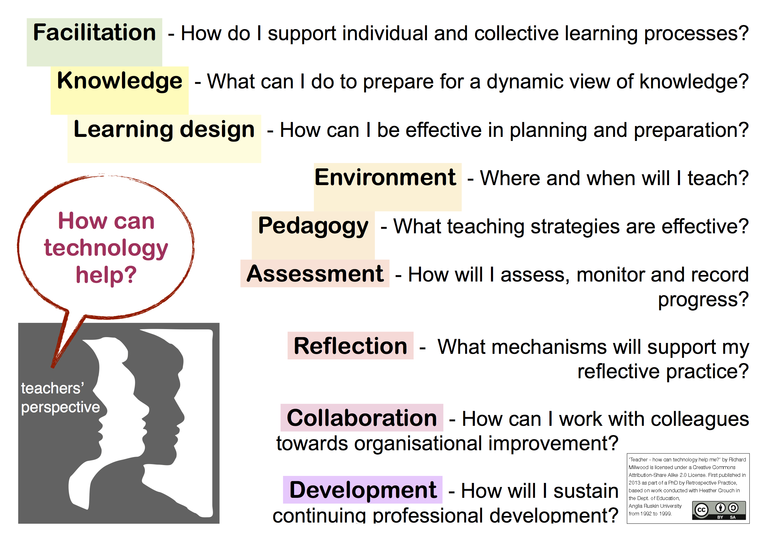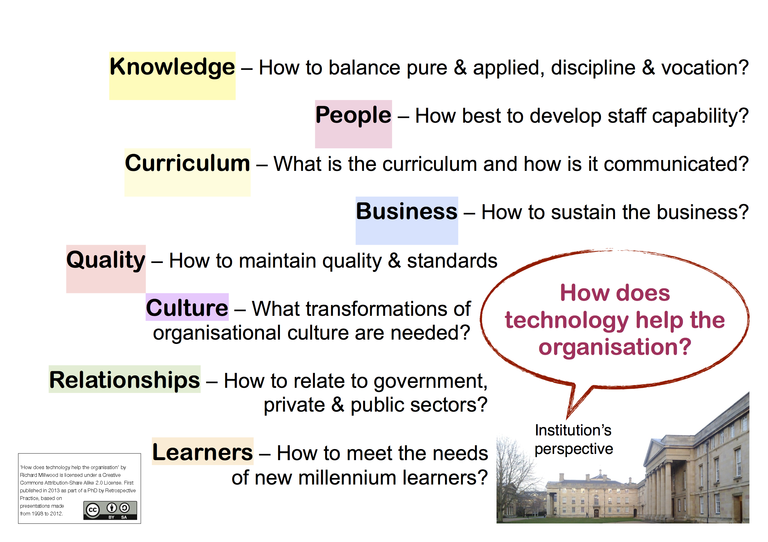[A4] Stakeholder perspectives in education
Teacher and Organisation
The analysis 'learner at the centre' cannot complete the designer's toolkit, because of the inter-dependency even the most auto-didactic of learners must have with the teacher (tutor or facilitator) and with the organisation that provides the formal educational elements, particularly the recognition through accredited qualification that can be used by the learner to compete for job or authority in society.
The questions in these analyses are posed to help the developer to consider how a technology-enhanced, learner-centred educational design can meet the needs of teachers and institutional managers when faced with new design issues. Such issues are found as the increasing societal use of technology challenges established authority and increases complexity of inter-relationship between experts and practitioners, as characterised in educational paradigms such as Connectivism (Siemens 2005).
For example, in developing the design for a work focussed learning enterprise, [C18] Ultraversity Project, [C20] Inter-Disciplinary Inquiry-Based Learning (IDIBL), I recognised that little attention was paid to the nature of teacher and organisation in the first project, Ultraversity, since this was already favourably established and a team ready to deliver. When trying to achieve a similar enterprise in the University of Bolton, I realised that the questions in the analysis from the teacher's perspective and from the organisation's perspective needed answers that matched the design's aims, and were not readily found. In this sense these analyses make explicit my linguistic framework for design (Mor 2010), which had tacitly operated in the development of Ultraversity.
These two analyses are more speculative and neither complete nor polished, since they are my most recent efforts in relation to the last decade of practice and have had fewer opportunities for testing and refinement in a practical context.

Figure 12: The teacher's perspective - How can technology help?

Figure 13: The organisational perspective - How does technology help the organisation?
(Words: 377 )

